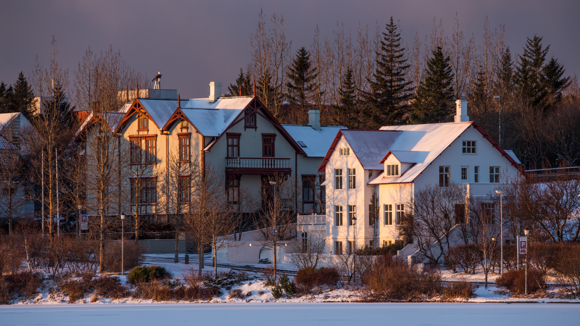Does It Snow in Reykjavik?

If you're wondering just how snowy Reykjavík gets, you're in the right place! While many imagine Iceland buried under heaps of snow year-round, the reality might surprise you. Reykjavík's winter weather is quite mild with moderate amounts of snow, sometimes no more than a light dusting. Let's dig into what you can expect when it comes to snow in Iceland’s capital.
Does It Snow In Reykjavík?
In short, yes. Given that Iceland is situated in the Arctic North, it isn't surprising that there’s ample snowfall here. But when it comes to Reykjavík, the weather is relatively mild since it's situated in the south of the country. So while snow does fall, it’s less frequent compared to the Highlands and northern towns such as Akureyri.
When Does it Snow In Reykjavík?
Compared to the rest of Iceland, Reykjavík doesn’t get as much snow. Peak snow is typically during the Christmas period and just enough falls to make the holidays even more magical. If you’re planning a winter visit to the city, this could be a great chance to learn about Iceland’s Christmas traditions. You can even celebrate the New Year in Icelandic style!
It’s best to visit between December and March if you’re keen to see snow in Reykjavík, although bear in mind that the snow doesn’t stick nearly as much as up North. On average, December and January receive around 10-15 cm and 15- 20 cm of snow respectively, although this can vary by year. Sometimes, the snow melts and is replaced by rain or sleet. Iceland’s capital is prepared for the snow so you don’t have to worry about travel disruptions. Besides, the city’s snow-covered streets and houses are a sight to behold and will instantly put your mind at ease.

Weather in Reykjavík
The weather in Reykjavík isn’t nearly as harsh as in some other areas of Iceland. This makes the capital an ideal destination for exploring, especially if you’re visiting Iceland for the first time. Reykjavík’s winter temperatures usually fall between 23°F and 35.6°F (-5°C to 2°C), but can sometimes drop to 14°F (-10°C). On warmer days, the mercury can reach up to 50°F (10°C).
Rainfall is more frequent than snow in Reykjavík, with precipitation at peak from September to February. October and November are the wettest months in the year receiving about 5-5.5 inches of rain, while January and February tend to be slightly drier, with precipitation averaging between 2.75-3.4 inches. During extreme weather events such as storms, rainfall could jump 7-8 inches, although this is quite uncommon in Reykjavík. The south and west of Iceland where rainfall is more frequent and intense are more likely to see such spikes. To sum up, while extreme rainfall is unusual in Reykjavík, it cannot be ruled out completely in the event of a storm. However, this should only be for a few days or until the storm dies out, whichever is earlier.
If you’re yet to make up your mind on when to book your trip, check out our other blogs on what Iceland is like in winter compared to summer, and when is the cheapest time to visit.
Get Ready for a Magical Time in the Icelandic Capital!
Reykjavík doesn’t get as much snow as you might expect for a place called Iceland, but when it does snow, it adds an ethereal element to the cityscape. Typically, you’ll see snowfall mainly between December and February, though lighter flurries can happen outside these months.
If you're planning a winter trip to Reykjavík, keep in mind that the city’s snowfall often comes with a bit of drama! Snow in Reykjavík isn’t always the soft, gentle kind; it frequently arrives with strong winds, leading to stormy conditions or "blowing snow," where gusts can reduce visibility and create a unique, powerful atmosphere. So, whether it’s a light dusting or a full-on snowstorm, winter in Reykjavík is always a memorable experience.

If you’re looking for a place to stay on your winter trek to Reykjavík, there are lots of fantastic hotels in the city where you can enjoy quiet Nordic luxury without breaking the bank.